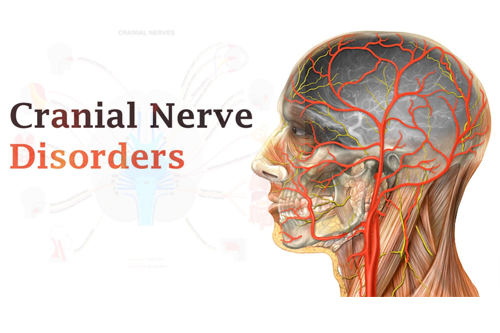
Cranial nerve disorders
Cranial nerve disorders refer conditions that affect twelve cranial nerves responsible for essential functions such as sensation, movement, and autonomic control. Since these nerves play a crucial role in communication between the brain and different parts of the body, any impairment can lead to significant health challenges. Moreover, early diagnosis and targeted treatment are vital in managing symptoms and improving quality of life.
Why Are Cranial Nerves Important?
To begin with, cranial nerves control many critical functions, including vision, hearing, balance, taste, and facial movement. Furthermore, they are responsible for transmitting sensory and motor signals between the brain and the head, neck, and torso. Therefore, any disruption in these nerves can result in a wide range of neurological symptoms. Additionally, timely medical intervention can help prevent long-term complications.
Common Types of Cranial Nerve Disorders
There are several disorders associated with cranial nerves, each affecting different functions. Understanding these conditions helps in early diagnosis and appropriate management.
Causes of Cranial Nerve Disorders
- Infections – Viral or bacterial infections, such as meningitis, can inflame cranial nerves.
- Trauma – Head injuries can damage cranial nerves, leading to functional impairments.
- Autoimmune Disorders – Conditions like multiple sclerosis can attack the myelin sheath of cranial nerves.
- Tumors – Benign or malignant growths can compress cranial nerves, affecting their function.
- Diabetes – High blood sugar levels can lead to nerve damage over time.
Diagnosis and Evaluation of Cranial Nerve Disorders
Treatment Options for Cranial Nerve Disorders
Treatment strategies for cranial nerve disorders vary depending on the specific condition, severity, and underlying cause. Moreover, a combination of medical therapy, rehabilitation, and lifestyle modifications can significantly improve patient outcomes.
- Pain Relievers: Anti-inflammatory drugs and analgesics help manage nerve pain.
- Anticonvulsants: Medications such as carbamazepine are effective for trigeminal neuralgia.
- Corticosteroids: These are commonly prescribed for optic neuritis and Bell’s palsy to reduce inflammation.
- Antibiotics or Antivirals: If an infection is the root cause, appropriate medications are administered.
Rehabilitation programs focus on restoring movement, balance, and coordination. Additionally, therapy sessions enhance muscle strength and flexibility, particularly for patients recovering from facial or vestibular nerve disorders.
- Microvascular Decompression: Used for conditions like trigeminal neuralgia, this procedure relieves pressure on the affected nerve.
- Nerve Decompression Surgery: Helps treat nerve compression caused by tumors or bone abnormalities.
- Gamma Knife Radiosurgery: A non-invasive technique used to target nerve-related conditions precisely.
- Acupuncture: Helps in managing chronic nerve pain.
- Massage Therapy: Reduces muscle tension or improves circulation.
- Herbal Supplements: Some patients find relief with natural remedies, although medical supervision is essential.
Future Trends in Cranial Nerve Disorder Treatment
Medical research is continuously advancing, offering promising new treatments. Some emerging trends include:
- Stem Cell Therapy: Potentially aiding nerve regeneration and repair.
- Gene Therapy: Targeting genetic mutations associated with cranial nerve disorders.
- Artificial Intelligence in Diagnostics: AI-powered tools are improving diagnostic accuracy and treatment planning.Contact Us
Conclusion
In summary, cranial nerve disorders can have a profound impact on an individual’s life. However, early diagnosis, a multidisciplinary approach, and advanced treatment options significantly enhance patient outcomes. Furthermore, with ongoing research and technological innovations, the future of cranial nerve disorder management looks increasingly promising. If you suspect a cranial nerve disorder, seeking medical evaluation at the earliest is the first step toward effective treatment and recovery.Schedule your Consultation with Dr. Ritesh Nawkhare
